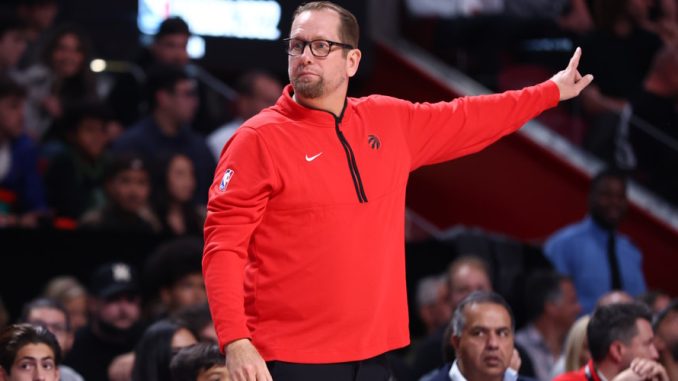
Why Pacers’ Pascal Siakam Never Made Sense As A Sixers Trade Target
The Philadelphia 76ers’ list of potential trade and free-agent targets is rapidly dwindling.
Kawhi Leonard signed an extension with the Los Angeles Clippers last week, and teammate Paul George might not be far behind. The New York Knicks traded for OG Anunoby in December, presumably with the intention of re-signing him once he becomes a free agent this offseason. And on Wednesday, the Indiana Pacers sent Bruce Brown and three first-round picks to the Toronto Raptors for Pascal Siakam.
Some fans might be frustrated that the Sixers didn’t top the Pacers’ offer for Siakam. After all, they’re currently able to offer three first-round picks—including an unprotected 2028 first-rounder from the Clippers—along with six second-round picks and plenty of expiring contracts. They had the ammunition to come over the top if so desired.
However, the public messaging in recent weeks was clear: The Sixers had minimal interest in Siakam. The NBA’s new collective bargaining agreement likely had something to do with that.
Earlier this month, Sam Amick of The Athletic reported that Siakam was “seeking a full-term, max-salary deal” in free agency this offseason. Based on the current $142 million salary-cap projection for the 2024-25 season, a max contract for Siakam would start at $42.6 million and would be worth $247.1 million over five years or $190.8 million over four. Teams other than the Pacers can offer him no more than a four-year, $183.2 million deal in free agency.

That might sound like a reasonable price to pay for someone who has averaged 22.8 points on 47.8% shooting, 7.6 rebounds and 4.8 assists per game over the past half-decade. For the Pacers, who have a fairly clean long-term cap sheet outside of Tyrese Haliburton’s upcoming five-year, $205.9 million extension, it very well might be. But the Sixers and Pacers are in two different places in that regard.
The Sixers already have reigning MVP Joel Embiid in the first season of a four-year, $213.3 million supermax extension that began at 35% of this year’s salary cap. They also have rising star guard Tyrese Maxey, whom they figure to re-sign this summer to a five-year max extension beginning at 25% of the cap (a projected $35.5 million). If Maxey makes an All-NBA team this year, he’d become eligible for a 30% max deal starting at $42.6 million.
The Sixers opted not to sign Maxey to an extension this past offseason, but they did so for a strategic reason. He’ll only count as $13.0 million against their books this summer until they re-sign him, so they’re effectively manufacturing the ability to create an additional $20-plus million in cap space that they otherwise wouldn’t have had. Still, they’re eventually going to re-sign him, and the starting salary of his new deal will be his cap hit in 2024-25.
Had the Sixers traded for Siakam and then re-signed both he and Maxey to max contracts this offseason, they’d have nearly $141.3 million on their books between Embiid, Siakam, Maxey, Paul Reed and Jaden Springer alone. Add in seven incomplete roster charges of roughly $1.2 million each ($8.2 million in total), and they’d be at $149.4 million, which is more than $7.4 million over the projection for next year’s cap.
Trading for Siakam would have allowed the Sixers to operate as an over-the-cap team, so they’d be able to re-sign most of their own free agents via Bird rights despite not having cap space. However, they’d have to be mindful of the new second apron, which projects to be $190.8 million next season. The Sixers would have less than $50 million to spread across their 10 remaining roster spots to stay under the second apron.
They’d have a $13.0 million non-taxpayer mid-level exception if they stayed below the $179.9 million first apron, and a $5.2 million taxpayer mid-level exception if they stayed below the second apron. But if they crossed the second apron, they’d have only veteran-minimum contracts to hand out in free agency and a host of new trade restrictions.

If Siakam were a perfect on-court fit with Embiid and Maxey, perhaps the Sixers would have been inclined to pursue him more aggressively. However, he’s a career 32.7% shooter from deep who might crowd Embiid in his preferred area at the elbow. He also can’t match up against an elite wing like Jayson Tatum or Jimmy Butler for an entire game, which is among the Sixers’ biggest needs ahead of the playoffs.
That ideal player might not become available at the trade deadline, or even in the offseason. But the Sixers weren’t going to cash in their remaining trade chips on someone who would hamper their flexibility that much moving forward unless he solved one of their top remaining problems.
So, what options do the Sixers have if Leonard, George, Anunoby and Siakam are all unavailable? Barring a surprise entrant to the trade market, they may be forced into the two-stars-and-depth model over a Big Three. Considering the restrictiveness that comes with crossing the second apron, that might be in their best interest, too.
Embiid is the league’s reigning MVP, and Maxey is likely a soon-to-be first-time All-Star. The Sixers also have more depth this year than they’ve had in a decade. They should and will peruse the trade market ahead of the Feb. 8 trade deadline, but their ability to create more than $55 million in cap space this summer will influence what they decide to do.
While the Sixers’ free-agent options might be dwindling, they could also use some of that cap space this offseason to facilitate unbalanced trades salary-wise. If teams look to salary-dump quality rotation players—like the Utah Jazz did with John Collins this past offseason—would that be a better gamble than spending a majority of your assets for Siakam?
That’s the question the Sixers had to ask themselves. Based on where he ended up, it seems like they landed on a clear no.
Leave a Reply